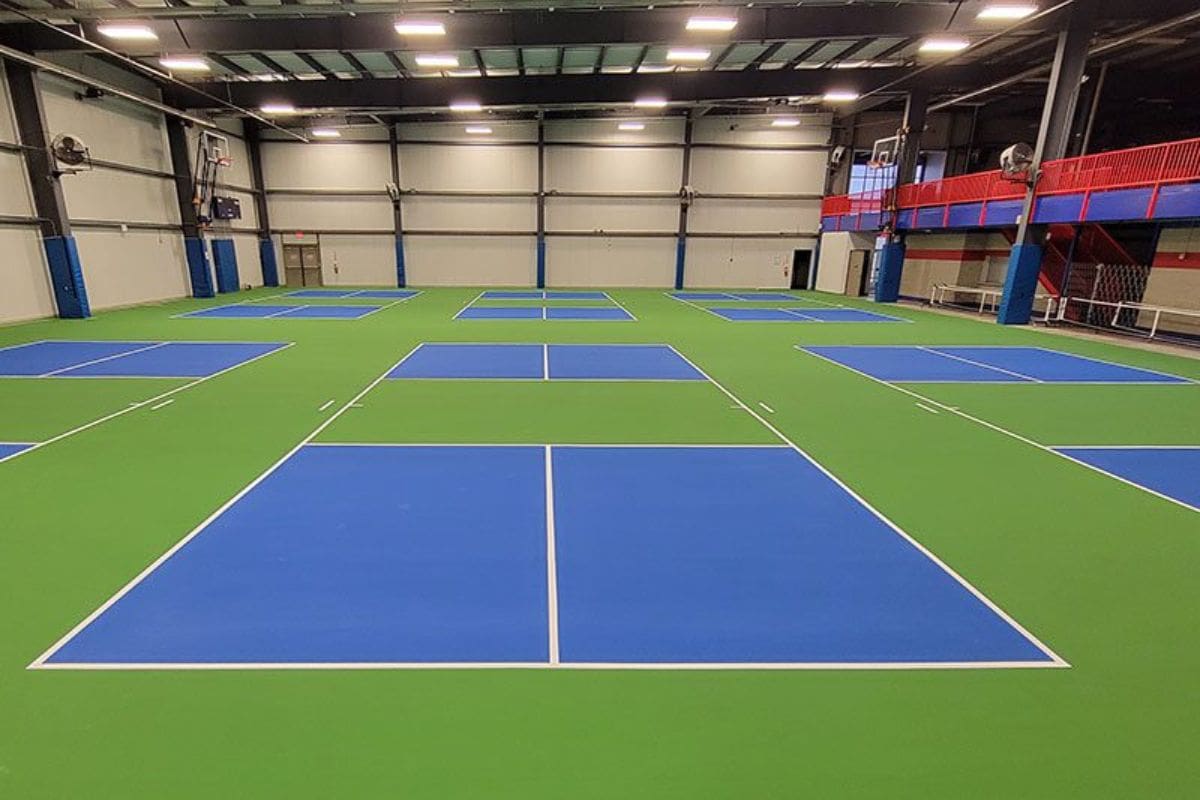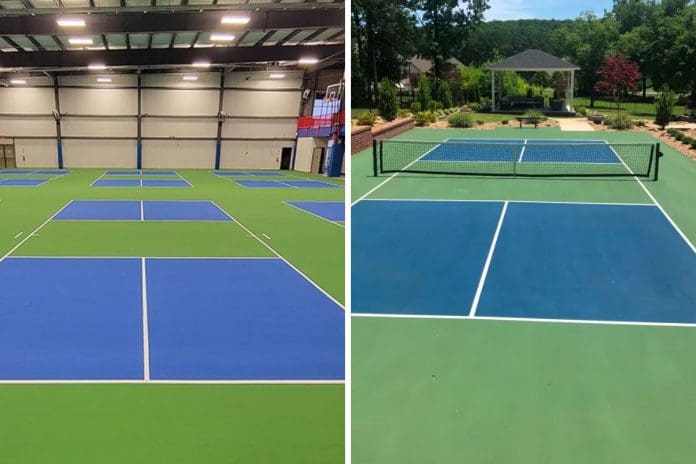Indoor vs. Outdoor Pickleball: When it comes to pickleball, the environment you play in can significantly impact your experience. Whether you’re stepping onto an indoor court or playing under the open sky, the setting introduces unique challenges. Here’s a breakdown of the critical factors to keep in mind when choosing between indoor and outdoor play.
The Challenges of Indoor Lighting and Court Backdrops
Lighting is a crucial element, particularly for those accustomed to playing outdoors. While most indoor venues strive to provide proper illumination, some fall short, offering either dim or overly bright conditions. This can make it tough to track the ball, especially during fast-paced rallies or overhead shots. For players entering an unfamiliar indoor venue for a tournament, it’s wise to arrive early—ideally a day in advance—to acclimate to the lighting conditions.
Beyond lighting, indoor venues may have backdrops or wall colors that complicate ball tracking. A player recalls, “I played at an indoor facility that had orange walls. I consistently lost the ball in the color of the walls.” Such visual distractions are unique to indoor settings and can influence your performance.

Temperature Control
One of the perks of indoor play is the guarantee of avoiding weather disruptions. Rain or shine, the game goes on. However, indoor facilities often come with their own set of temperature challenges. Some venues may be sweltering, with little ventilation, while others might be frigid due to overactive air conditioning.
These conditions can affect not only your comfort but also the pace of the game. “Some places are extremely hot and humid with little to no air flow,” one player notes, adding that this can slow down the game and require multiple clothing changes throughout the day. Conversely, colder venues can lead to stiff muscles and the need for longer warm-ups between matches. Preparing for these extremes means packing accordingly—bring layers and be ready to adapt to whatever the indoor climate throws at you.
Court Surfaces and Noise: The Indoor Experience
Indoor pickleball courts can vary significantly in surface type, unlike the more standardized outdoor courts. Players might find themselves on anything from multi-sport surfaces to basketball hardwood, fast concrete, or even clay. This variability makes it crucial to familiarize yourself with the court before your matches begin. As one experienced player suggests, “Walk around the court and look for dead spots, cracks, or any oddity of note.”
Noise is another factor unique to indoor play. The sound of a pickleball echoing off four walls can be distracting, and in some cases, the delay between striking the ball and hearing the impact can throw off your timing. “I played on a court in North Carolina that had a one second echo delay,” one player shares, highlighting how the acoustics of an indoor venue can affect concentration.
Adapting to Different Environments: A Strategy for Success
One way to prepare for the unpredictability of indoor and outdoor environments is to embrace the challenge of playing on varied courts. Whether it’s dealing with cracks in the surface, the sun in your eyes, or the wind in your face, adapting to less-than-ideal conditions can sharpen your mental toughness. As one player puts it, “There is no better practice for playing a tournament or match on different types of courts than practicing on different types of courts.” Facing these adversities head-on can make you a stronger, more versatile player, ready to compete no matter the environment.
News in Brief: Indoor vs. Outdoor Pickleball
The environment in which you play pickleball—whether indoors or outdoors—can significantly affect your game. Indoors, challenges like tricky lighting, varying temperatures, and diverse court surfaces can impact your performance. On the other hand, indoor play offers protection from weather but may introduce acoustic distractions.
Players are advised to prepare by familiarizing themselves with the venue’s conditions beforehand and by practicing on a variety of courts to build adaptability and mental resilience. Embracing these challenges can lead to improved gameplay and readiness for any tournament or match.
also read : Ply-Mar Pickleball Classic Tournament Arriving for Glory This September

